
Radical 18 or radical knife (刀部) meaning "knife" is one of 23 Kangxi radicals composed of 2 strokes.

Radical 25 or radical divination (卜部) is one of the 23 Kangxi radicals composed of two strokes.
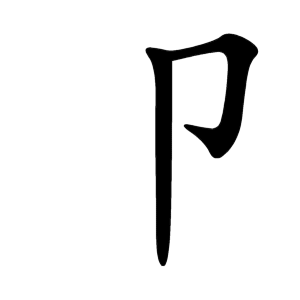
Radical 26 or radical seal (卩部) meaning "seal" is one of the 23 Kangxi radicals composed of two strokes.

Radical 66 or radical tap (攴部) meaning "tap" is one of the 34 Kangxi radicals composed of 4 strokes. It is also used to represent a folding chair.
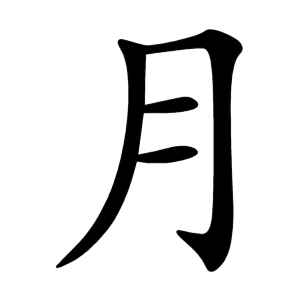
Radical 74 or radical moon (月部) meaning "moon" or "month" is one of the 34 Kangxi radicals composed of 4 strokes.

Radical 78 or radical death (歹部) meaning "death", "decay", "bad" or "vicious" is one of the 34 Kangxi radicals composed of 4 strokes.

Radical 121 or radical jar (缶部) meaning "jar" is one of the 29 Kangxi radicals composed of 6 strokes.
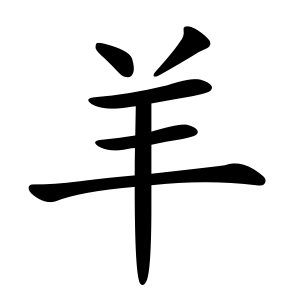
Radical 123 or radical sheep (羊部) meaning "sheep" or "goat" is one of the 29 Kangxi radicals composed of 6 strokes.
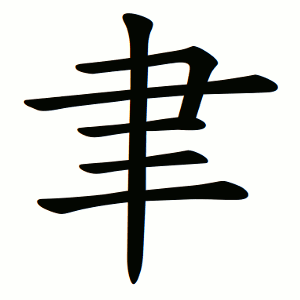
Radical 129 or radical brush (聿部) meaning "brush" is one of the 29 Kangxi radicals composed of 6 strokes.

Radical 137 or radical boat (舟部) meaning "boat" is one of the 29 Kangxi radicals composed of 6 strokes.

Radical 141 or radical tiger (虍部) meaning "tiger" is one of the 29 Kangxi radicals composed of 6 strokes.

Radical 145 or radical clothes (衣部) meaning "clothes" is one of the 29 Kangxi radicals composed of 6 strokes. The radical character transforms into 衤 when appearing at the left side of a Chinese character.
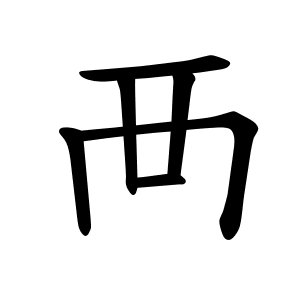
Radical 146 or radical west (襾部) meaning "cover" or "west" is one of the 29 Kangxi radicals composed of 6 strokes.

Radical 152 or radical pig (豕部) meaning "pig" is one of the 20 Kangxi radicals composed of 7 strokes.
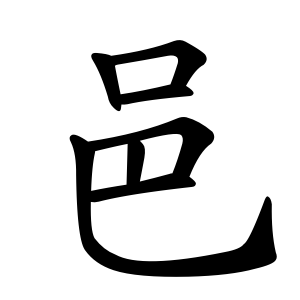
Radical 163 or radical city (邑部) meaning "city" is one of the 20 Kangxi radicals composed of 7 strokes. This radical character transforms into 阝 when used as a right component.

Radical 167 or radical gold (金部) meaning "gold" or "metal" is one of the 9 Kangxi radicals composed of 8 strokes. It also represents the Chinese family name, Jin, which is No. 29[1] of the Hundred Family Surnames.

Radical 169 or radical gate (門部) meaning "gate" or "door" is one of the 9 Kangxi radicals composed of 8 strokes.
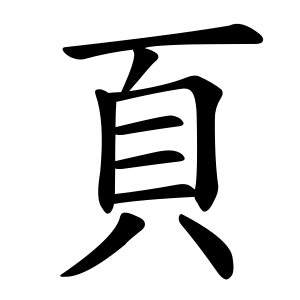
Radical 181 or radical leaf (頁部) meaning "leaf", "head" or "page" is one of the 11 Kangxi radicals composed of 9 strokes.

Radical 187 or radical horse (馬部) meaning "horse" is one of the 8 Kangxi radicals composed of 10 strokes.

Radical 193 or radical cauldron (鬲部) meaning "cauldron" or "tripod" is one of the 8 Kangxi radicals composed of 10 strokes.
This page is based on this
Wikipedia article Text is available under the
CC BY-SA 4.0 license; additional terms may apply.
Images, videos and audio are available under their respective licenses.
























